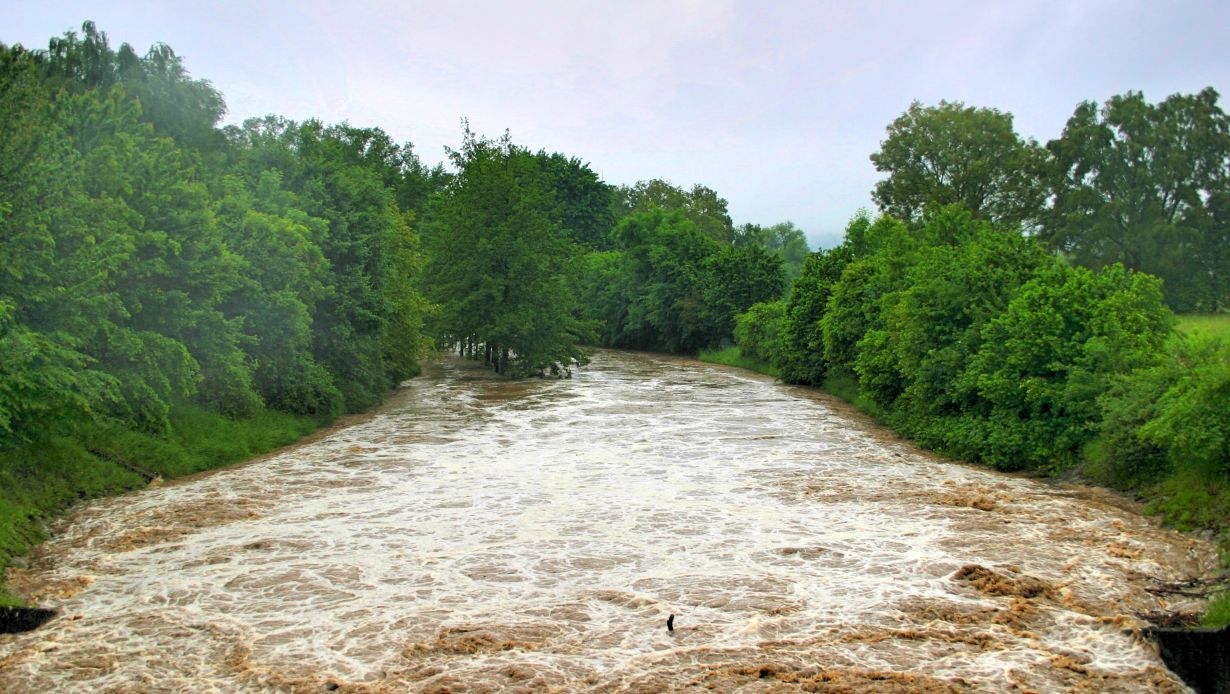
Heavy rainfall and the resulting flooding and inundations are among the most significant natural hazards, with severe consequences for people, the environment, and infrastructure - especially in small river basins. The KI-HopE-De project coordinated by Karlsruhe Institute of Technology (KIT) unites researchers, meteorological services, and flood forecasting center to improve forecasting of such events in Germany using machine-learning methods. The Federal Ministry of Education and Research is funding the recently launched project with EUR 1.8 million.
In small river basins - i.e. catchment areas with a size between five and 500 square kilometers - extreme weather events can easily cause rapid, local flooding. This reduces the warning time and impairs the reliability of meteorological and hydrological forecasts. Therefore, the German Federal States do not publish detailed forecasts for smaller rivers, but only regional warning levels covering the respective river basin or district. "Thus, our primary goal is to develop the first national probabilistic flood-forecasting model that enables consistent and reliable forecasting for the entire territory of the Federal Republic," says the head of the project, Dr. Ralf Loritz, from KIT's Institute for Water and Environment.
Data Models Based on Artificial Intelligence for More Accurate Flood Forecasting
To enable short-term flood forecasts of up to 48 hours in advance for small catchment areas in the first place, and then make them more efficient, robust, and flexible, the researchers involved in the KI-HopE-De joint project (AI-based flood prediction in small river basins in Germany) are exploring and developing suitable AI methods. "Our aim is to create a comprehensive hydro-meteorological dataset, which is publicly accessible worldwide and includes both measuring and forecasting data. This data comes from our own sources as well as from the German Meteorological Service and various Federal State environmental agencies from all over Germany," says Loritz.
The data set will serve as the foundation for future training and comparison of hydrological forecast models. Loritz sees a huge potential in modern machine-learning methods for this purpose, stressing their ability to learn complex interrelations from hydrological datasets and thus generate robust and computationally efficient simulations based on hydro-meteorological measuring data and numerical weather forecasts. "Research has shown that these models are at least equivalent, or in part even superior to the physics-based models that are currently used in flood forecasting," says the hydrologist.
Application-oriented Development Facilitates Transfer into Practice
KI-HopE-DE is an interdisciplinary project involving multiple institutions: It pools the expertise from hydrology, meteorology, and machine learning; and it links universities, national large-scale research institutions as well as Federal and State agencies. Project partners besides KIT are the German Meteorological Service (DWD), the Rhineland-Palatinate State Agency for the Environment (LfU RP), and the North Rhine-Westphalia State Agency for Nature, Environment, and Consumer Protection (LANUV NRW). "The future users - in this case, the State agencies - participate in the research and development of the models right from the start. "This way, we ensure the development of an application-oriented prototype and the buildup of skills on the part of the future users, thereby facilitating transfer into practice."
With KI-HopE-De, the researchers want to make an essential contribution to public safety and flood protection. Professor Peter Knippertz from KIT's Institute of Meteorology and Climate Research Troposphere Research is one of the project leaders. He explains, "We're creating an innovative platform prototype that might be adopted by all flood forecast centers in Germany."
More information on the KIT Climate and Environment Center
Being "The Research University in the Helmholtz Association", KIT creates and imparts knowledge for the society and the environment. It is the objective to make significant contributions to the global challenges in the fields of energy, mobility, and information. For this, about 10,000 employees cooperate in a broad range of disciplines in natural sciences, engineering sciences, economics, and the humanities and social sciences. KIT prepares its 22,800 students for responsible tasks in society, industry, and science by offering research-based study programs. Innovation efforts at KIT build a bridge between important scientific findings and their application for the benefit of society, economic prosperity, and the preservation of our natural basis of life. KIT is one of the German universities of excellence.






